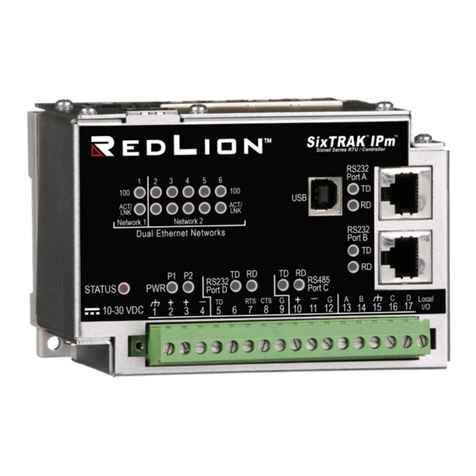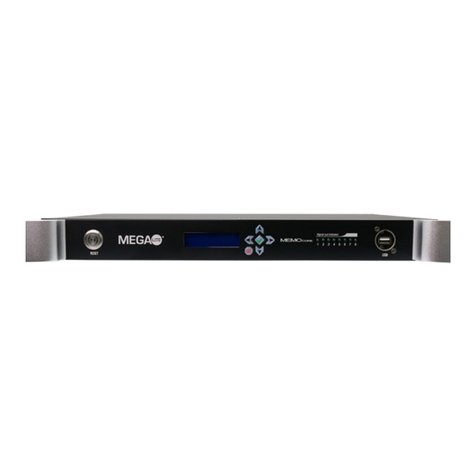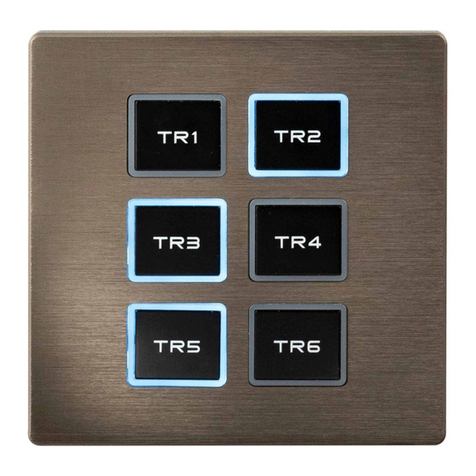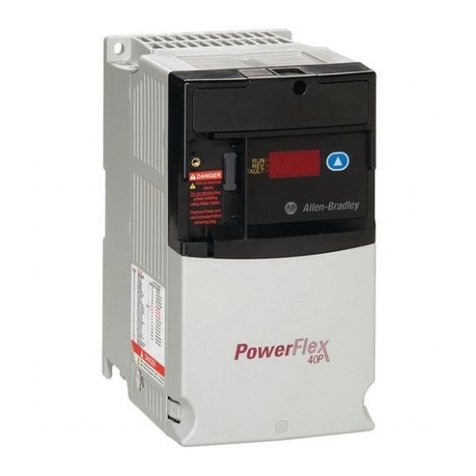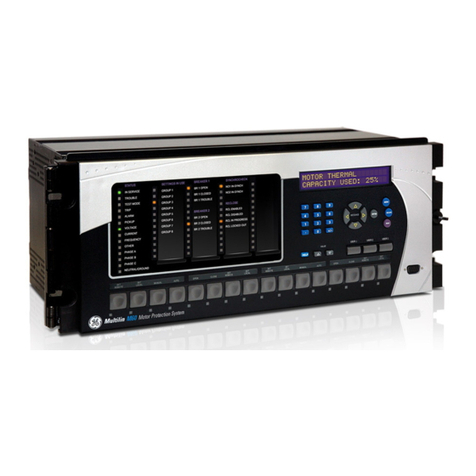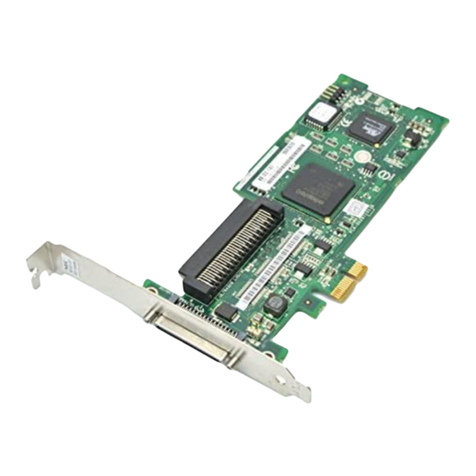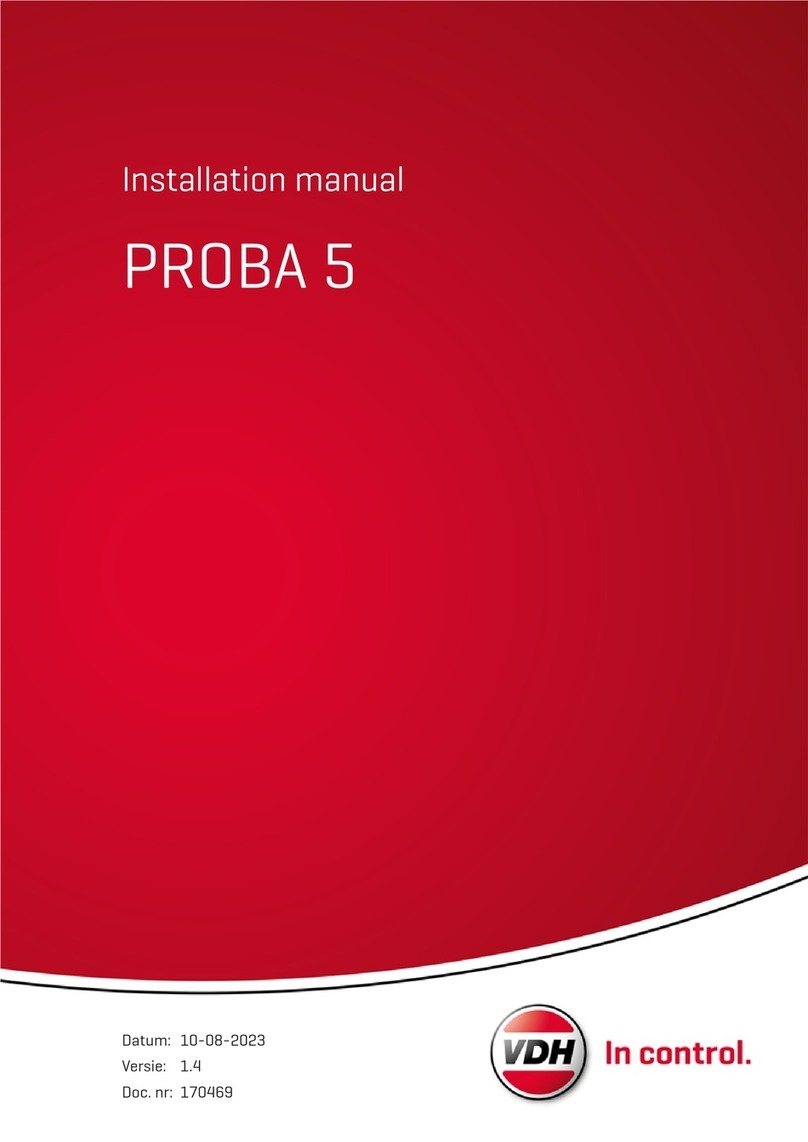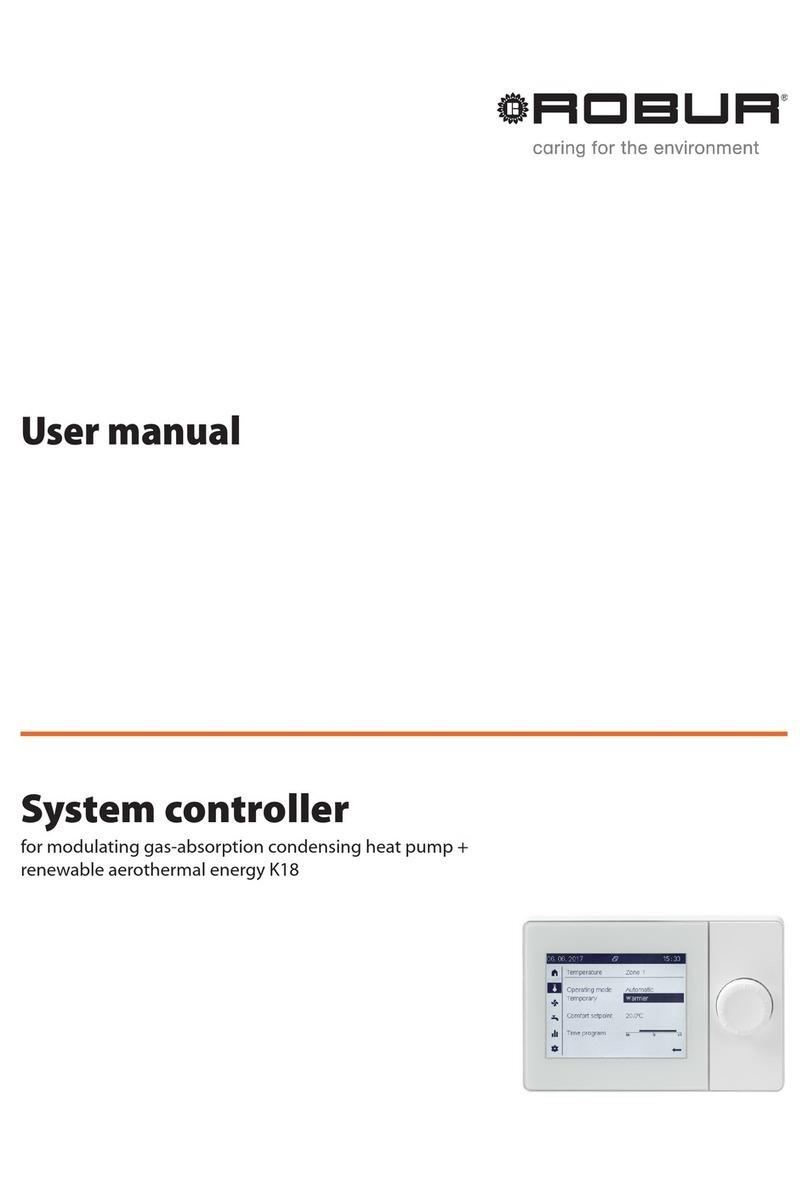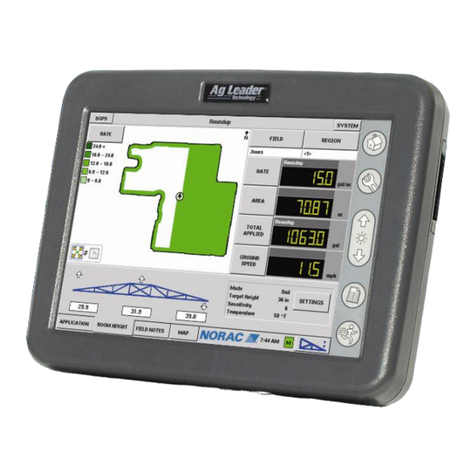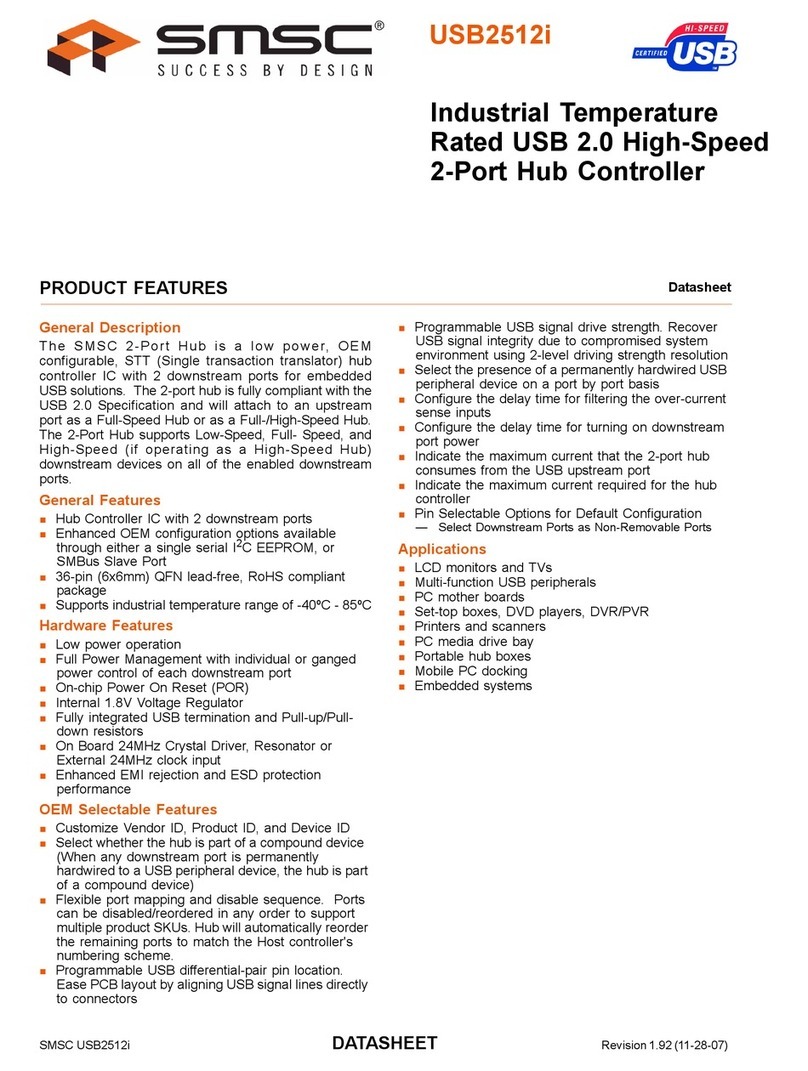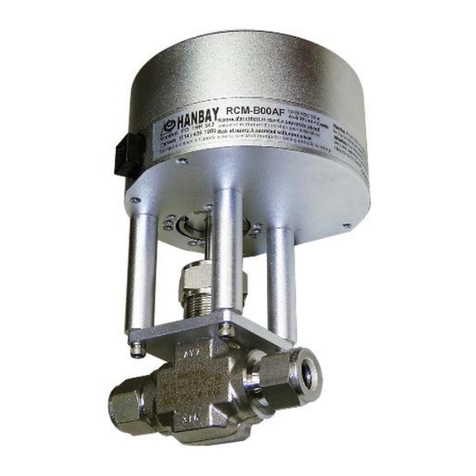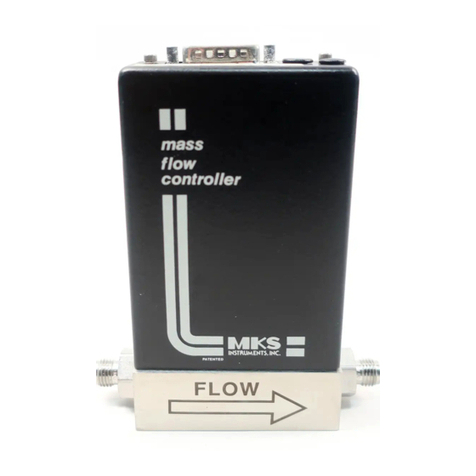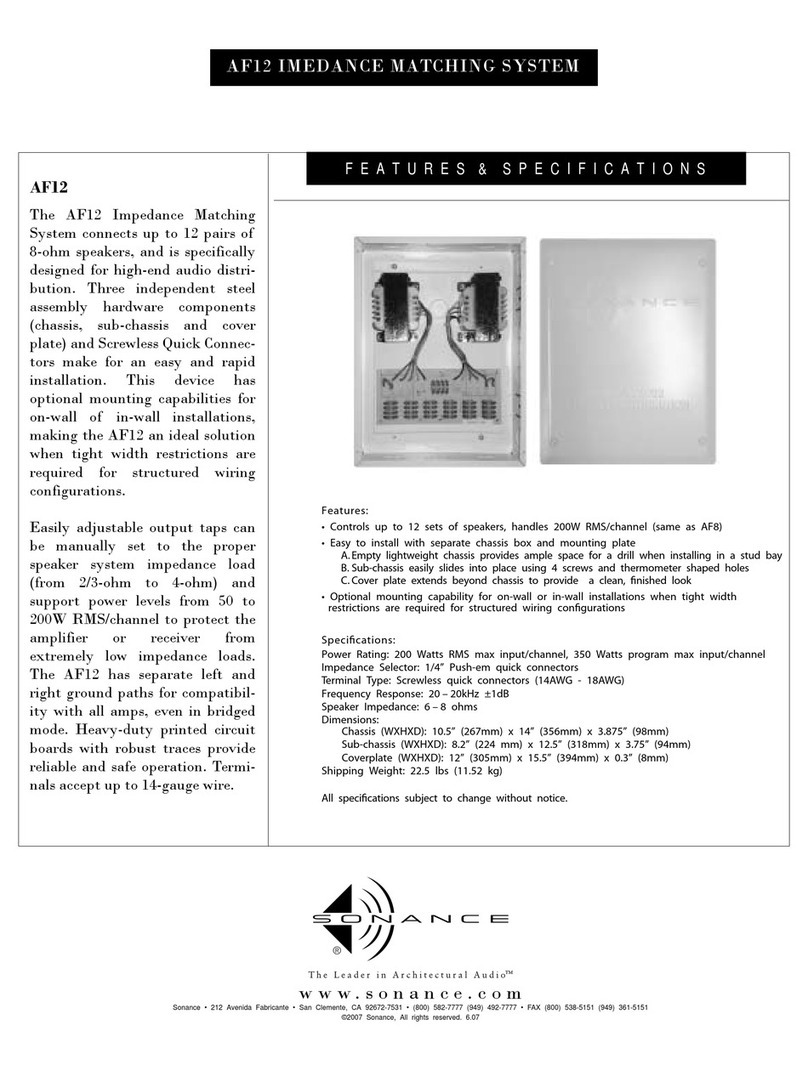DEEP SEA ELECTRONICS DSE5560 User manual

COMPLEX SOLUTIONS
MADE SIMPLE.
DEEP SEA ELECTRONICS PLC
DSE5560
MAINS / ATS CONTROLLER
OPERATING MANUAL

DSE Model 5560 ATS and Mains Controller Operators Manual
2 057-017 5560 OPERATING MANUAL ISSUE 5.1 25/03/15 AM
Deep Sea Electronics Plc
Highfield House
Hunmanby
North Yorkshire
YO14 PH
ENGLAND
Sales Tel: +44 ( ) 1723 89 99
Sales Fax: +44 ( ) 1723 8933 3
E-mail: sales@Deepseaplc.com
Website:
www.deepseaplc.com
DSE Model 556 Control and Instrumentation System Operators Manual
© Deep Sea Electronics Plc
All rights reserved. No part of this publication may be reproduced in any material form (including photocopying
or storing in any medium by electronic means or other) without the written permission of the copyright holder
except in accordance with the provisions of the Copyright, Designs and Patents Act 1988.
Applications for the copyright holder’s written permission to reproduce any part of this publication should be
addressed to Deep Sea Electronics Plc at the address above.
Any reference to trademarked product names used within this publication is owned by their respective
companies.
Deep Sea Electronics Plc reserves the right to change the contents of this document without prior notice.

DSE Model 5560 ATS and Mains Controller Operators Manual
057-017 5560 OPERATING MANUAL ISSUE 5.1 25/03/15 AM 3
TABLE OF CONTENTS
Sec ion Page
1 INTRODUCTION .............................................................................................. 5
1.1
CLARIFICATION OF NOTATION USED WITHIN THIS PUBLICATION. ......................... 6
1.2
ICON DESCRIPTIONS .................................................................................................... 6
2 OPERATION .................................................................................................... 7
2.1
CONTROL ...................................................................................................................... 7
2.2
MANUAL OPERATION ................................................................................................... 8
2.3
AUTOMATIC OPERATION ........................................................................................... 10
2.3.1
STARTING ............................................................................................................. 1
2.3.2
CLOSING THE BUS BREAKER ............................................................................. 11
MAINS FAILED ................................................................................................................. 11
MAINS AVAILABLE .......................................................................................................... 11
2.3.3
RUNNING IN PARALLEL ....................................................................................... 12
RUNNING IN LOAD DEMAND .......................................................................................... 12
REMOTE START IN ISLAND MODE ................................................................................ 12
2.3.4
RE-TRANSFER TO MAINS .................................................................................... 13
2.4
TEST OPERATION ....................................................................................................... 14
2.5
5560 MULTIPLE MAINS OPERATION .......................................................................... 15
2.5.1
556 PRIORITY ..................................................................................................... 15
2.5.2
556 LOAD CT ....................................................................................................... 16
3 PROTECTIONS .............................................................................................. 16
3.1
WARNINGS .................................................................................................................. 17
3.2
ELECTRICAL TRIPS .................................................................................................... 18
3.3
ROCOF / VECTOR SHIFT............................................................................................. 19
4 DESCRIPTION OF CONTROLS .................................................................... 20
4.1.1
SYNCHROSCOPE OPERATION ............................................................................ 22
4.2
LED INDICATORS ........................................................................................................ 22
4.3
COMPLETE INSTRUMENTATION LIST ....................................................................... 23
4.3.1
BASIC INSTRUMENTATION .................................................................................. 23
4.4
FRONT PANEL CONFIGURATION EDITOR ................................................................ 24
4.4.1
ENTERING THE PIN NUMBER .............................................................................. 24
4.4.2
EDITING VALUES .................................................................................................. 25
4.4.3
LIST OF ADJUSTABLE PARAMETERS ................................................................. 26
4.5
DISPLAY EDITOR ........................................................................................................ 27
4.5.1
EDITING ‘DISPLAY EDITOR’ CONFIGURATION VALUES .................................... 27
4.6
CONTROL PUSH-BUTTONS ........................................................................................ 29
5 INSTALLATION INSTRUCTIONS .................................................................. 32
5.1
PANEL CUT-OUT ......................................................................................................... 32
5.2
COOLING ..................................................................................................................... 32
5.3
UNIT DIMENSIONS ...................................................................................................... 32
5.4
FRONT PANEL LAYOUT AND LED IDENTIFICATION ................................................ 33
6 LED INDICATORS AND LOGO INSERT ....................................................... 34
7 ELECTRICAL CONNECTIONS ...................................................................... 35
7.1
CONNECTION DETAILS .............................................................................................. 35
7.1.1
PLUG “A” 8 WAY .................................................................................................... 35
7.1.2
PLUG “B” 11 WAY .................................................................................................. 35
7.1.3
PLUG “C” 9 WAY.................................................................................................... 35
7.1.4
PLUG “D” 3 WAY.................................................................................................... 36
7.1.5
PLUG “E” 5 WAY .................................................................................................... 36
7.1.6
PLUG “F” 8 WAY .................................................................................................... 36
7.1.7
PLUG “G” 4 WAY ................................................................................................... 36
7.1.8
PLUG “H” 12 WAY .................................................................................................. 36
7.1.9
PC CONFIGURATION INTERFACE CONNECTOR ................................................ 37

DSE Model 5560 ATS and Mains Controller Operators Manual
4 057-017 5560 OPERATING MANUAL ISSUE 5.1 25/03/15 AM
7.1.1
EXPANSION INTERFACE CONNECTOR ............................................................... 37
7.2
CONNECTOR FUNCTION DETAILS ............................................................................. 38
7.3
CONNECTION DETAILS ............................................................................................... 38
7.3.1
PLUG “A” 8 WAY .................................................................................................... 38
7.3.2
PLUG “B” 11 WAY .................................................................................................. 38
7.3.3
PLUG “C” 4 WAY .................................................................................................... 39
7.3.4
PLUG “D” 3 WAY .................................................................................................... 39
7.3.5
PLUG “E” 5 WAY .................................................................................................... 4
7.3.6
PLUG “F” 8 WAY .................................................................................................... 4
7.3.7
PLUG “G” 4 WAY .................................................................................................... 4
7.3.8
PLUG “H” 9 WAY .................................................................................................... 4
7.4
ORDERING REPLACEMENT CONNECTORS FROM DSE ........................................... 41
8 SPECIFICATION ............................................................................................ 42
9 COMMISSIONING ......................................................................................... 44
9.1.1
PRE-COMMISSIONING .......................................................................................... 44
9.2
COMMISSIONING SCREENS ....................................................................................... 45
9.2.1
SCREEN 1 .............................................................................................................. 45
9.2.2
SCREEN 2 .............................................................................................................. 45
9.2.3
SCREEN 3 .............................................................................................................. 45
10 FAULT FINDING ......................................................................................... 46
11 TYPICAL WIRING DIAGRAM..................................................................... 47
12 TYPICAL SYSTEM SCHEMATICS ............................................................. 48
13 FACTORY DEFAULT CONFIGURATION .................................................. 51
14 APPENDIX .................................................................................................. 55
14.1
OUTPUT EXPANSION ............................................................................................... 55
14.1.1
RELAY OUTPUT EXPANSION (157) ...................................................................... 55
14.1.2
LED OUTPUT EXPANSION (548) ........................................................................... 55
14.2
INPUT EXPANSION ................................................................................................... 55
14.2.1
P13 ....................................................................................................................... 55
14.2.2
P54 / P541) ........................................................................................................... 55
14.3
COMMUNICATIONS OPTION .................................................................................... 56
14.3.1
DESCRIPTION ....................................................................................................... 56
14.3.2
PC TO CONTROLLER (DIRECT) CONNECTION ................................................... 56
14.3.3
MODEM TO CONTROLLER CONNECTION ........................................................... 56
14.3.4
RS485 LINK TO CONTROLLER ............................................................................. 56
TYPICAL BUILDING MANAGEMENT SCHEME USING RS485 MONITORING ................. 58
14.3.5
MODBUS™ ............................................................................................................ 58
14.4
ENCLOSURE CLASSIFICATIONS ............................................................................ 59
IP CLASSIFICATIONS ...................................................................................................... 59
NEMA CLASSIFICATIONS ................................................................................................ 6

DSE Model 5560 ATS and Mains Controller Operators Manual
057-017 5560 OPERATING MANUAL ISSUE 5.1 25/03/15 AM 5
1 INTRODUCTION
The DSE 5560 Module has been primarily designed to allow the user to start and stop a multi set
system of generators, and if required, transfer the load to the generator bus either manually or
automatically. The module also has the facility to run in parallel with the mains, maintaining either a
fixed generator output or a fixed mains power level (kW and VAr). The 556 also allows the system
operating parameters to be viewed via the LCD display.
The DSE 5560 module monitors the incoming AC mains supply for under or over voltage / under or
over frequency and instructs the multi-set generating system to start and to supply the load. When
the mains returns, the 556 will back synchronise the multi-set system to the mains and execute a
soft transfer of load back to the mains.
The powerful Micro-processor contained within the module allows for a range of complex features
to be incorporated as standard;
• True RMS voltage monitoring.
• Communications capability - RS485 for connection to building management system or other
RS485 Modbus multidrop communications system.
• ully configurable inputs for use as alarms or a range of different functions.
• Input expansion using P130 to give eight additional digital inputs.
• Extensive range output functions using built in relay outputs or the optional relay expansion unit.
Selective operational sequences, timers and alarm trips can be altered by the customer via a PC
using the 5xxx For Windows ™ software and P81 interface module.
Access to critical operational sequences and timers for use by qualified engineers can be barred
by a security code. Module access can be barred by PIN code. Limited operational parameters can
be changed from the module front panel.
The module is housed in a robust plastic case suitable for panel mounting. Connections to the
module are via locking plug and sockets.

DSE Model 5560 ATS and Mains Controller Operators Manual
6 057-017 5560 OPERATING MANUAL ISSUE 5.1 25/03/15 AM
1.1 CLARIFICATION OF NOTATION USED WITHIN THIS PUBLICATION.
NOTE:
Highlights an essential element of a procedure to ensure correctness.
CAUTION!
Indicates a procedure or practice which, if not strictly observed, could result
in damage or destruction of equipment.
WARNING!
Indicates a procedure or practice which could result in injury to personnel
or loss of life if not followed correctly.
Deep Sea Electronics Plc owns the copyright to this manual, which cannot
be copied, reproduced or disclosed to a third party without prior written
permission.
1.2 ICON DESCRIPTIONS
Symbol
Meaning
Descrip i
on
Stop/Reset Stops the system generators (if the generators are in
Auto mode) and reset any alarm conditions. Refer to
other sections with in this Manual.
I
Start Starts the system of generators (if the generators are
in Auto mode and the 556 is in manual mode).
Auto The controller will automatically start the system of
generator (if the generators are in Auto mode) when
given a remote start command, or the mains fails
Manual The controller will start the system of generators
when the start button is pressed (if the generators
are in Auto mode)
Mains Failure Simulation
(Test)
This is used to simulate a mains failure event.
NOTE:- This es s he au o s ar /sync/load
share func ions of he sys em bu will no es
he mains failure de ec ion.
Alarm Mute Silences the audible warning device.
Lamp Test Causes all indicating LED’s to illuminate to test for
correct operation
Transfer to bus Instructs the controller to transfer the load to the bus
supply.
Transfer to mains Instructs the controller to transfer the load to the
mains supply.
Event Log Details recorded history of operation.
Information Changes the display between the different
information pages.
Scroll Scrolls the display between different items in the
current information page.

DSE Model 5560 ATS and Mains Controller Operators Manual
057-017 5560 OPERATING MANUAL ISSUE 5.1 25/03/15 AM 7
2 OPERATION
2.1 CONTROL
Control of the DSE 5560 module is via push buttons mounted on the front of the module with
STOP/RESET, MANUAL, TEST, AUTO, ALARM MUTE and START functions. For normal
operation, these are the only controls which need to be operated. The smaller push buttons are
used to access further information such as mains voltage or to change the state of the load
switching devices when in manual mode. Details of their operation are provided later in this
document.
The following descriptions detail the sequences followed by a module containing the standard
‘factory configuration’. Always refer to your configuration source for the exact sequences and
timers observed by any particular module in the field.

DSE Model 5560 ATS and Mains Controller Operators Manual
8 057-017 5560 OPERATING MANUAL ISSUE 5.1 25/03/15 AM
2.2 MANUAL OPERATION
Opera ion
De ail
To initiate a start sequence, press the
‘Manual’
push-button.
The LED above the manual button will illuminate
and the LCD display will then indicate:
Status
Mains on load
Manual mode
Then, press the
START
push
-
button. The 556
will issue a start command to all connected 551
controllers.
NOTE:- If running on load demand op ion is se o “S ar se s sequen ially” hen one se
will s ar a a ime as load levels rise.
If configured o “s ar all se s ini ially” hen all se s will s ar a he same ime.
The 556 will display:
Any available 551 in auto mode will be issued with a start
signal.
Please refer to the 551 operating manual for further details of
the start sequence
Status
Start request
Manual mode
Once the Minimum number of sets (set using 5xxx software)
have synchronised onto the bus, the 556 will display:
Status
Mains on load
Manual mode
Pressing the transfer to bus/open mains button
will
synchronise the bus to the mains. The 556 will display:
Status
Synchronise bus
Manual mode
Once the bus has synchronised to the mains, the bus will close
and power will be ramped onto the bus (generators). The 556
will display:
Status
Ramp onto bus
1 % kW 12% kVAr
Manual mode
Once the bus power / mains power level has been reached
(configured using 5xxx software) the 556 will display:
Status
Continuous paralleling
Manual Mode
The sys em will remain in his mode un il fur her ac ion is aken.
Pressing the transfer to bus/open mains button
again will
transfer the remaining load onto the bus (generators). The 556
will display:
Status
Ramp onto bus
1 % kW 12% kVAr
Manual mode
Once the mains loading has reached kW the mains will open
and the 556 will display:
Status
Bus on load
Manual mode

DSE Model 5560 ATS and Mains Controller Operators Manual
057-017 5560 OPERATING MANUAL ISSUE 5.1 25/03/15 AM 9
The sys em will remain in his mode un il fur her ac ion is aken.
Pressing the transfer to mains/open bus button
once will synchronise the bus to the mains.
The 556 will display:
Status
Synchronise bus
Manual mode
Once the bus has synchronised to the mains, the
mains will close and power will be ramped off the
bus (generators). The 556 will display:
Status
Ramp off bus
1 % kW 12% kVAr
Manual mode
Once the bus power / mains power level has
been reached (configured using 5xxx software)
the 556 will display:
Status
Continuous paralleling
Manual Mode
The sys em w
ill remain in his mode un il fur her ac ion is aken.
Opera ion
De ail
Pressing the transfer to mains/open bus button
again will transfer the remaining load onto the
mains. The 556 will display:
Status
Ramp off bus
1 % kW 12% kVAr
Manual mode
Once the bus loading has reached kW the bus
will open and the 556 will display:
Status
Mains on load
Manual mode
Pressing the red stop button will issue a stop to
all 551 s on the system
The LED above the button will illuminate and the
LCD display will briefly indicate:
Status
Mains on load
Stop mode
Any 551 running in auto mode will then display:
Please refer to the 551 operating manual for
further details of the 551 stop sequence
RETURN DELAY
:5
NOTE:- Pressing he STOP/RESET bu on
a any ime will ransfer he load o he
mains and s op he genera ors.

DSE Model 5560 ATS and Mains Controller Operators Manual
10 057-017 5560 OPERATING MANUAL ISSUE 5.1 25/03/15 AM
2.3 AUTOMATIC OPERATION
2.3.1 STARTING
Opera ion
De ail
If the module is placed in AUTO mode, it will monitor the
incoming mains supply and remote start signal (if
configured).
The LCD display will indicate :
Status
Mains on load
Auto mode
The call to start can come from a number of sources (if configured) :
• Mains supply failure.
• Remote start input (either on load, on load demand or in island mode)
Once a call to start is received, the module will initiate
its ‘Start Delay’ timer This is used to ensure that the
start event is required and not just a momentary
condition. The 556 will display:
Status
Start delay
: 5
Auto mode
Once this timer has expired, any available 551 in auto
mode will be issued with a start signal, and will display:
Please refer to the 551 operating manual for further
details of the 551 start sequence.
START DELAY
: 5
The 556 will display:
Status
Start request
Auto mode

DSE Model 5560 ATS and Mains Controller Operators Manual
057-017 5560 OPERATING MANUAL ISSUE 5.1 25/03/15 AM 11
2.3.2 CLOSING THE BUS BREAKER
MAINS FAILED
As the mains supply has failed, there is no requirement
for synchronising. However, the 556 will check to
ensure that the load bus is ‘dead’ before closing the
generator bus breaker onto the load.
This check is made using the internal ‘dead bus relay’
and the functionality of the Multiset Communications
Link (MSC).
Status
Continuous paralleling
Auto mode
Should the mains supply return, the module will first
initiate a return timer to ensure that it is safe to stop the
generators.
The 556 will display:
Status
Return delay
: 5
Auto mode
NOTE: - Should the mains fail within this time, the module will continue to run the generators
on load and ignore the fluctuating “call to stop” until such a time as it remains inactive for the
duration of the stop delay timer.
MAINS AVAILABLE
If the mains supply is available when the sets are called to take load, the generator bus must first
be synchronised with the mains supply. This will occur if:
• The sets are started by remote start (if configured).
• The sets are started due to high mains load (if configured to start upon this event)
Once the Minimum number of sets (set using 5xxx
software) have synchronised onto the bus, the 556 will
display:
Status
Synchronise to bus
Auto mode
Once the bus has synchronised to the mains, the bus
load switching device will be closed and power will be
ramped onto the bus (generators). The 556 will
display:
Status
Ramp onto bus
1 % kW 12% kVAr
Auto mode
Once the bus power / mains power level has been
reached (configured using 5xxx software) the 556 will
display:
Status
Continuous paralleling
Auto mode

DSE Model 5560 ATS and Mains Controller Operators Manual
12 057-017 5560 OPERATING MANUAL ISSUE 5.1 25/03/15 AM
2.3.3 RUNNING IN PARALLEL
RUNNING IN LOAD DEMAND
If the module is configured for running in load demand, sets will be started and stopped
automatically on changing load levels.
NOTE: - If he load is reduced o zero (0kW) hen he gense (s) wi h he highes priori y
will remain running.
REMOTE START IN ISLAND MODE
If the module is confi
gured for
remote start in island
mode, the load is then ramped fully onto the generators.
The 556 will display:
Status
Ramp onto bus
76% kW 8 % kVAr
Auto mode
Once the mains loading has reached kW, the bus load
switch will be opened and the 556 will display:
Status
Bus on load
Auto mode
Should the remote start signal be deactivated, the
module will first initiate a return timer to ensure that it is
not a transient condition. The 556 will display:
Status
Return delay
: 5
Auto mode
NOTE: - Should a call to start become active again, the module will continue to run the
generators on load and ignore the fluctuating “call to stop” until such a time as it remains inactive
for the duration of the return delay timer.

DSE Model 5560 ATS and Mains Controller Operators Manual
057-017 5560 OPERATING MANUAL ISSUE 5.1 25/03/15 AM 13
2.3.4 RE-TRANSFER TO MAINS
Once the return delay has expired, the bus is
synchronised to the mains.
Status
Synchronise to Mains
Auto mode
The load is then ramped back onto the mains. The 556
will display:
Status
Ramp off bus
1 % kW 12% kVAr
Auto mode
Once the bus loading has reached kW, the bus load
switch will be opened and the 556 will display :
Status
Mains on load
Auto mode
Any 551 running in Auto mode will be issued a stop
command and will display :
Please refer to the 551 operator manual for details on
the stopping sequence.
Return delay
: 5

DSE Model 5560 ATS and Mains Controller Operators Manual
14 057-017 5560 OPERATING MANUAL ISSUE 5.1 25/03/15 AM
2.4 TEST OPERATION
Opera ion
De ail
To place the module into
‘TEST’
mode press
‘TEST’
PUSHBUTTON. This mode is used to simulate an
automatic start and will start the generators to run in
continuous parallel mode.
The LCD display will indicate
Status
Mains on load
Test mode
The LED above the button will illuminate and the
module will start its ‘Start Delay’ timer This is used to
ensure that the start event is required and not just a
momentary transient signal. The 556 will display:
Status
Start delay
: 5
Test mode
Once this timer has expired, any available 551 in auto
mode will be issued with a start signal, and will display:
Please refer to the 551 operating manual for further
details of the 551 start sequence.
START DELAY
: 5
The 556 will display:
Status
Start request
Test mode
Once the Minimum number of sets (set using 5xxx
software) have synchronised onto the bus, the 556 will
display:
Status
Synchronise to bus
Test mode
Once the bus has synchronised to the mains, the bus
will close and power will be ramped onto the bus
(generators). The 556 will display:
Status
Ramp onto bus
1 % kW 12% kVAr
Test mode
Once the bus power / mains power level has been
reached (configured using 5xxx software) the 556 will
display:
Status
Continuous paralleling
Test mode
The sys em will remain in his mode un il fur her ac ion is aken.
If the module is placed in
‘AUTO’
mode by pressing the
‘AUTO’ PUSHBUTTON, it will monitor the auxiliary
inputs for a ‘REMOTE START’ signal. In addition, the
module will monitor the incoming AC mains supply.
For further details on operation in AUTO mode, see the
relevant section elsewhere in this document.

DSE Model 5560 ATS and Mains Controller Operators Manual
057-017 5560 OPERATING MANUAL ISSUE 5.1 25/03/15 AM 15
2.5 5560 MULTIPLE MAINS OPERATION
In a multiple mains system, the generator sets are controlled by more than one 556 mains
controller and used to provide power to multiple loads.
Should one or more of the mains supplies fail, the generators (controlled by DSE 551 modules)
are started and supply power to the load. If more than one mains supply has failed, the loads are
transferred to the generators one by one.
The 551 controllers share power equally on a percentage basis with the other generators in the
system.
• If one mains supply returns, the 556 connected to that mains supply will synchronise the
generators with the mains and affect a no-break changeover. The generators continue to
supply power to the remaining loads.
• If more than one mains supply returns at the same time, then the 556 with the highest
priority will take control of the generators and affect a no-break changeover back to the
mains supply. The remaining 556 s will operate in priority order providing no-break returns
back to their respective mains supplies.
If the generators are ‘peak-lopping’ with one mains supply, and another mains supply fails,
dependant upon module configuration, the generators will either:
• Continue to peak-lop as before. The load with the mains supply that has failed will remain
without power.
• Cease peak-lopping and backup the failed mains supply.
NOTE: - A no ime are he genera ors paralleled wi h more han one mains supply a a
ime. Paralleling wi h mains supplies is always aken in urn.
2.5.1 5560 PRIORITY
Where more than one 556 controller is present, they must determine which one is to take control
over the generators. The following table shows how this priority decision is made.
Priori y
Condi ion
HIGHEST
Auto mode, mains failed, bus not on load
Auto mode, mains has returned
Auto mode, mains failed, bus on load
Auto mode, mains available, requesting control over generators
Test on load mode
Manual mode, sets running or about to run (start button has been pressed)
Auto mode, mains available
Manual mode, sets not running (waiting for start button to be pressed)
Stop mode
LOWEST
Where two or more 556 controllers have the same conditions in the table above, the ‘Set Priority’
configuration setting comes into effect. If two or more 556 controllers have the same priority
number, an electrical trip alarm is generated - Priority Selection Error - and the priority numbers
must be changed before the system will operate.
NOTE: - If a 5560 reques s o con rol he genera ors (ei her au oma ically or manually) i
will no be allowed o do so un il higher priori y 5560 con rollers have relinquished con rol
over hem.
For typical one line diagram of a multi-mains system, see the section entitled “Typical system
schematics” elsewhere in this manual.

DSE Model 5560 ATS and Mains Controller Operators Manual
16 057-017 5560 OPERATING MANUAL ISSUE 5.1 25/03/15 AM
2.5.2 5560 LOAD CT
The 556 controller incorporates an optional (but recommended) extra CT measuring the size of
the load. Used in conjunction with the CTs measuring the amount of load on the mains supply, this
CT allows the 556 to determine what portion of the load is being supplied by the generators.
This allows the 556 to remove the sets from this load when there is little or no current passing
through the bus breaker. For example: When the generators are ramping off load.
3 PROTECTIONS
The module will indicate that an alarm has occurred in several ways;
The Audible Alarm will sound
.
This can be silenced by pressing the ‘
Mu e
’
button.
The LCD display will jump from the ‘Status page’ to display the Alarm.
The LCD will then display :
Followed by the appropriate alarm text.
ALARM
Bus failed to open
If no alarms are present, the LCD will display the
following message and will then return to the ‘S a us
Display’ page.
No alarm present
The LCD will display multiple alarms E.g. “Bus fail to open”, “Fail to synchronise” and “Mains fail to
close” alarms have been triggered. These will automatically scroll round in the order that they
occurred.
It is also possible to scroll to display the different alarms using the scroll buttons

DSE Model 5560 ATS and Mains Controller Operators Manual
057-017 5560 OPERATING MANUAL ISSUE 5.1 25/03/15 AM 17
3.1 WARNINGS
Warnings are non-critical alarm conditions and do not affect the operation of the generator system,
they serve to draw the operators attention to an undesirable condition.
BATTERY LOW VOLTAGE, if the module detects that the systems DC supply has fallen below the
low volts setting level , the module will display ‘WARNING LOW BATTERY VOLTAGE’ on the
LCD. The COMMON ALARM LED will illuminate.
BATTERY HIGH VOLTAGE, if the module detects that the system DC supply has risen above the
high volts setting level, the module will display ‘WARNING HIGH BATTERY VOLTAGE’ on the
LCD. The COMMON ALARM LED will illuminate.
FAILED TO SYNCHRONISE, if the module cannot synchronise within the time allowed by the
Synchronising timer a warning is initiated. The LCD will indicate ‘FAILED TO SYNC’ and the
COMMON ALARM LED will illuminate.
AUXILIARY INPUTS, if an auxiliary input has been configured as a warning the appropriate LCD
message will be displayed and the COMMON ALARM LED will illuminate.
MAINS FAILED TO CLOSE, if the mains breaker fails to close, a warning is initiated. The LCD will
indicate ‘MAINS FAILED TO CLOSE’ and the COMMON ALARM LED will illuminate.
MAINS FAILED TO OPEN, if the mains breaker fails to open, a warning is initiated. The LCD will
indicate ‘MAINS FAILED TO OPEN’ and the COMMON ALARM LED will illuminate.
INSUFFICIENT CAPACITY, if the generators reach full load when they are in parallel with the
mains (utility). The LCD will indicate ‘INSUFFICIENT CAPACITY’ and the COMMON ALARM LED
will illuminate.
MINIMUM SETS NOT REACHED, if the minimum number of sets on the bus has not been reached
prior to closing the generator bus load switching device, the LCD will indicate ‘MINIMUM SETS
NOT REACHED’ and the COMMON ALARM LED will illuminate.
MSC DATA ERROR, if the data on the MSC link is corrupt, then the LCD will indicate ‘MSC DATA
ERROR’ and the COMMON ALARM LED will illuminate.
MSC ID ERROR, if more than one 556 module is connected to the same MSC link, the LCD will
indicate ‘MSC ID ERROR’ and the COMMON ALARM LED will illuminate.
MSC FAILURE, if the link breaks, the LCD will indicate ‘MSC FAILURE’ and the COMMON
ALARM LED will illuminate.
BUS FAILED TO CLOSE, if the bus breaker fails to close, the LCD will indicate ‘BUS FAILED TO
CLOSE’ and the COMMON ALARM LED will flash.
BUS FAILED TO OPEN, if the bus breaker fails to open, the LCD will indicate ‘BUS FAILED TO
OPEN’ and the COMMON ALARM LED will flash.
MAINS REVERSE POWER, if the 556 detects that the bus is exporting more than the configured
limit, the LCD will indicate ‘MAINS REVERSE POWER’ and the COMMON ALARM LED will flash.
MSC TOO FEW SETS, if the number of modules on the MSC link falls below the Minimum
modules on Mul ise comms link, the LCD will indicate ‘MSC TOO FEW SETS’ and the
COMMON ALARM LED will illuminate.
MSC ALARMS INHIBITED, if an input has been configured as ‘MSC ALARMS INHIBIT’ and is
active, the LCD will indicate ‘MSC ALARMS INHIBIT’ and the COMMON ALARM LED will
illuminate.

DSE Model 5560 ATS and Mains Controller Operators Manual
18 057-017 5560 OPERATING MANUAL ISSUE 5.1 25/03/15 AM
3.2 ELECTRICAL TRIPS
Electrical trips are latching, and open the bus breaker. The alarm must be accepted and cleared,
and the fault removed to reset the module.
MAINS REVERSE POWER, if the module detects a mains reverse power in excess of the pre-set
trip level and time delay, an electrical trip is initiated. The LCD will indicate ‘MAINS REVERSE
POWER’ and the COMMON ALARM LED will flash.
AUXILIARY INPUTS, if an auxiliary input has been configured as an Electrical Trip the appropriate
LCD message will be displayed and the COMMON ALARM LED will flash.
MINIMUM SETS NOT REACHED, if the minimum number of sets are not synchronised on to the
bus, prior to the common bus breaker closing, an electrical trip is initiated. The LCD will indicate
‘MIN. SETS NOT REACHED’ and the COMMON ALARM LED will flash.
BUS FAILED TO CLOSE, if the bus breaker fails to close, an electrical trip is initiated. The LCD
will indicate ‘BUS FAILED TO CLOSE’ and the COMMON ALARM LED will flash.
BUS FAILED TO OPEN, if the bus breaker fails to open, an electrical trip is initiated. The LCD will
indicate ‘BUS FAILED TO OPEN’ and the COMMON ALARM LED will flash.
INSUFFICIENT CAPACITY, if the module is configured for Mains CT and the load levels are so
high that the generator is unable to supply enough load to maintain the configured mains level,
insufficient capacity will be displayed and the COMMON ALARM LED will flash. The generator will
provide 1 % of its capacity and the loading on the mains will increase.
MAINS REVERSE POWER, if the module is configured for Mains CT and the amount of power
being exported to the mains supply is above the setting for the ‘export power level alarm’ then
mains reverse power is displayed and the COMMON ALARM LED will flash.
OLD UNITS ON BUS, if the module detects that there is one or more 556 controllers connected
to the MSC link that are not compatible with the module (for example earlier versions not
supporting multiple mains supplies), Old units on bus is displayed and the COMMON ALARM LED
will flash.
FAILED TO SYNCHRONISE, if the module cannot synchronise within the time allowed by the
Synchronising timer a warning is initiated. The LCD will indicate ‘FAILED TO SYNC’ and the
COMMON ALARM LED will illuminate.
MSC TOO FEW SETS, if the 556 detects that the number of generator sets connected module
cannot synchronise within the time allowed by the Synchronising timer a warning is initiated. The
LCD will indicate ‘FAILED TO SYNC’ and the COMMON ALARM LED will illuminate.
PRIORITY SELECTION ERROR, if the 556 detects that two or more 556 controllers share the
same priority number, an electrical trip is initiated. The LCD will indicate ‘PRIORITY SELECTION
ERROR’ and the COMMON ALARM LED will illuminate.
BUS PHASE SEQUENCE WRONG, if the module detects a bus phase rotation error, an electrical
trip is initiated. The LCD will indicate ‘BUS PHASE SEQ WRONG’ and the COMMON ALARM
LED will illuminate.
MAINS PHASE SEQUENCE WRONG, if the module detects a mains phase rotation error, an
electrical trip is initiated is initiated. The LCD will indicate ‘MAINS PHASE SEQ WRONG’ and the
COMMON ALARM LED will illuminate.

DSE Model 5560 ATS and Mains Controller Operators Manual
057-017 5560 OPERATING MANUAL ISSUE 5.1 25/03/15 AM 19
3.3 ROCOF / VECTOR SHIFT
When configured to run in parallel with the mains (utility) supply, the module monitors for ROCOF /
Vector shift trips according to the module’s configuration settings. This is included within the
module and will detect failure of the mains supply during parallel operation with the generator.
NOTE:- This pro ec ion opera es only when in parallel wi h he mains supply and is
disabled a all o her imes.
Should either of these alarms operate, the module will perform either a controlled shutdown
(electrical trip) of the generator or will instigate the mains failure function. This operation must be
manually reset :
1) Press button. The engine will stop if it is still running and the alarm is cleared.
2) Activate digital input configured to “Clear ROCOF/Vector shift” if this has been provided.
3) Press and button together and hold for 5 seconds. The ROCOF/Vector shift
instrument is displayed and all ‘peak hold’ values are reset, clearing the ROCOF/Vector
shift alarm.
Alarm
Elec rical Trip
Mains ROCOF
Alarm
Elec rical Trip
Mains Vec or Shif
Alarm
Elec rical Trip
Mains Decoupling
Low Frequency
Alarm
Elec rical Trip
Mains Decoupling
High Frequency
Alarm
Elec rical Trip
Mains Decoupling
Low Vol age
Alarm
Elec rical Trip
Mains Decoupling
High Vol age
For details on activating and configuring the ROCOF/Vector shift protection you are referred to the
5xxx for Windows configuration software manual.

DSE Model 5560 ATS and Mains Controller Operators Manual
20 057-017 5560 OPERATING MANUAL ISSUE 5.1 25/03/15 AM
4 DESCRIPTION OF CONTROLS
The following section details the function and meaning of the various controls on the module.
Up and Down
Scroll Buttons LCD Display
User Configurable
LEDS With Insert Pocket
Stop / Reset
Button
Manual Mode
Button
Test Mode
Button
Auto Mode
Button
Alarm Mute /
Lamp Test
Start button
Table of contents
Other DEEP SEA ELECTRONICS Controllers manuals
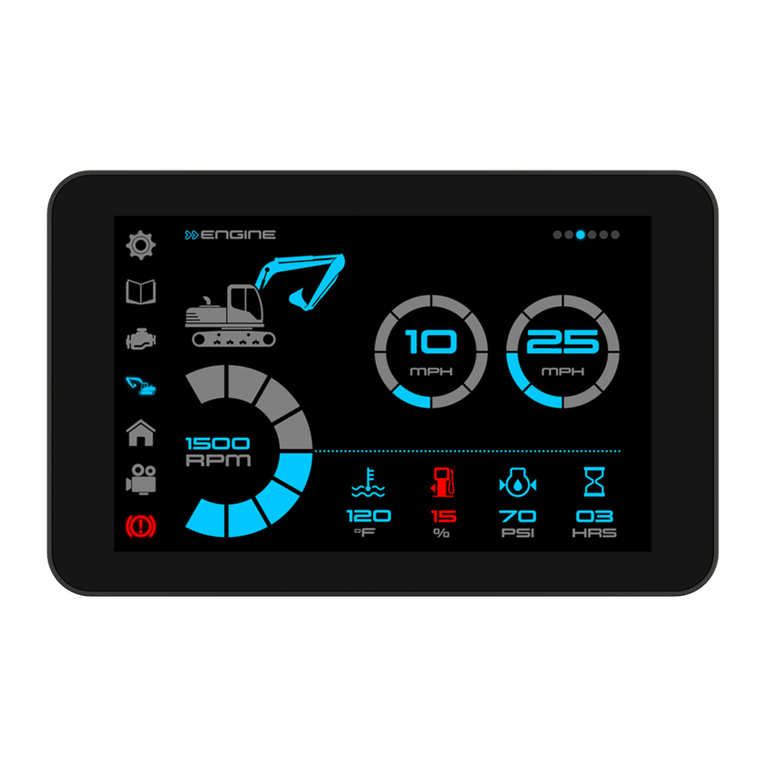
DEEP SEA ELECTRONICS
DEEP SEA ELECTRONICS DSEControl DSEM812 Setup guide
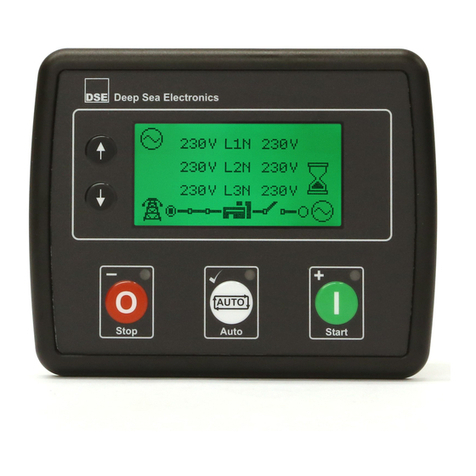
DEEP SEA ELECTRONICS
DEEP SEA ELECTRONICS DSE4520 MKII User manual
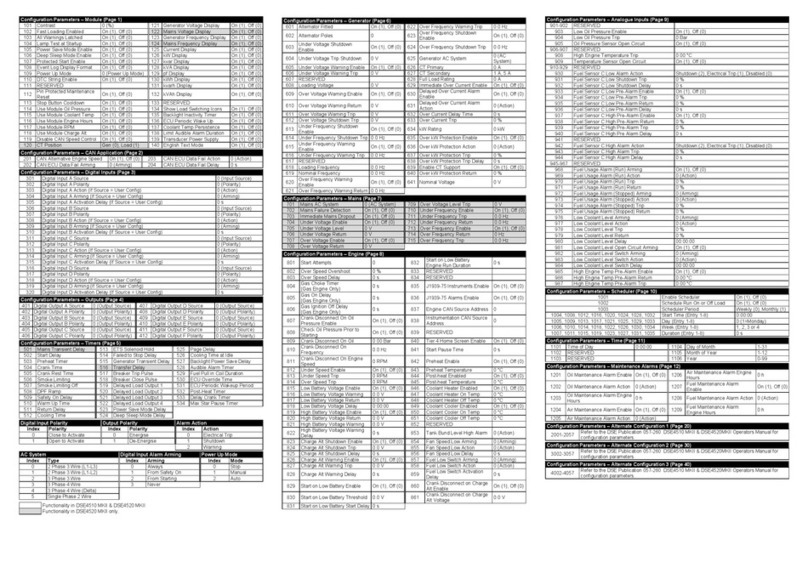
DEEP SEA ELECTRONICS
DEEP SEA ELECTRONICS DSE4510 MKII User manual

DEEP SEA ELECTRONICS
DEEP SEA ELECTRONICS DSEM840 User manual
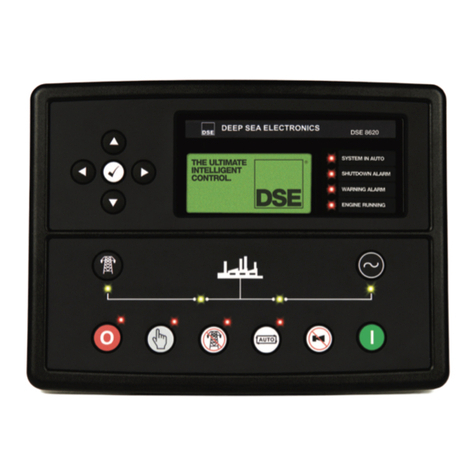
DEEP SEA ELECTRONICS
DEEP SEA ELECTRONICS DSE8620 User manual
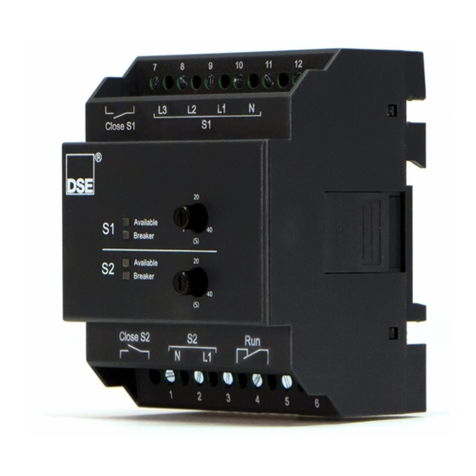
DEEP SEA ELECTRONICS
DEEP SEA ELECTRONICS DSE327 User manual
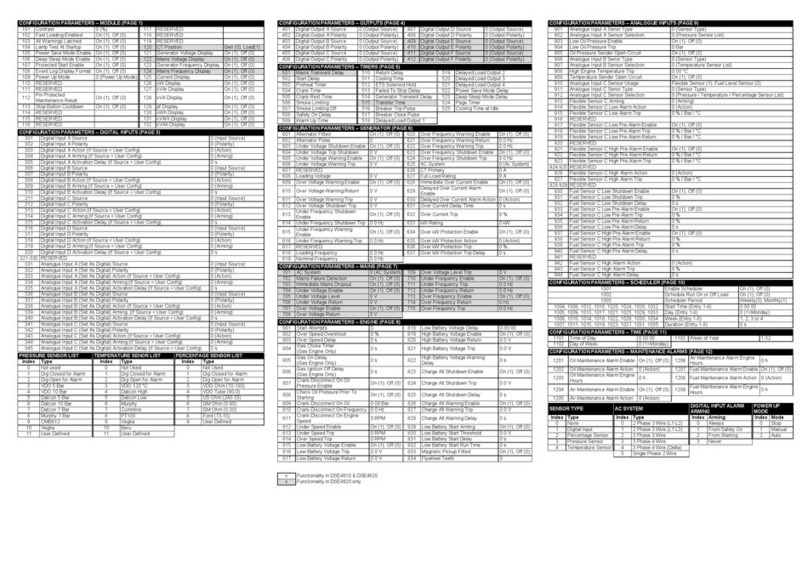
DEEP SEA ELECTRONICS
DEEP SEA ELECTRONICS DSE4610 User manual
